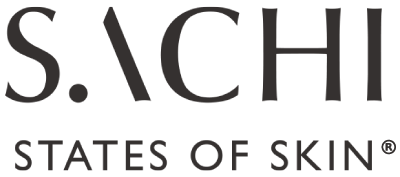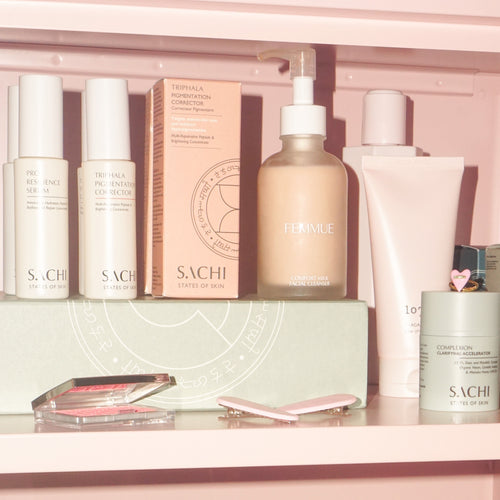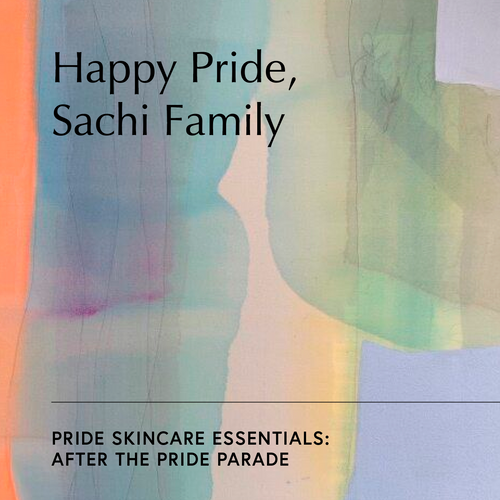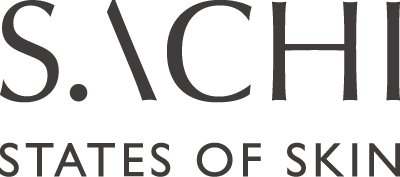5 min read
Retinol is usually the go-to Vitamin A derivative choice for those looking for well-ageing and blemish-fighting solutions. But does that necessarily make it the best Vitamin A derivative? We think it's time to shed light on a hidden gem, Retinal, the superior Retinoid for its breakthrough 1-step conversion to Retinoic Acid and fantastic blemish-fighting antibacterial properties.
As a group, Retinoids are one the most effective skin ingredients that lead to reduced appearance of fine lines and wrinkles as well as treating a host of different skin concerns like hyperpigmentation, acne, hormonal breakouts, uneven skin tone and dark spots. Even so, results can take anywhere between 3-6 months, with optimal results after 6-12 months of consistent use.
Vitamin A and its derivatives
There are many forms of Retinoids, so to avoid any confusion, we’ll start off by quickly defining a few of them.
Retinoid - An umbrella term used to describe a family of chemical compounds that are derived from Vitamin A, such as Retinol, Retinaldehyde (Retinal), and Retinoic Acid that work by increasing skin cell turnover. Not all Retinoids are created equal though, read on to know the differences.
Retinoic Acid/Vitamin A- This is the active form of Vitamin A and the one that is directly used by the skin. It is the most powerful form of Retinoid available and can only be obtained through a prescription from a medical professional because of its tendency to trigger irritation and sensitivity. All other types of OTC (Over-The-Counter) Retinoids have to go through chemical conversions in the skin to reach this active form for safety reasons.
Retinal(dehyde) - This Retinoid only needs 1 conversion to get to the Retinoic Acid form, delivering fast and effective results, although it can be accompanied with a higher risk of irritation and sensitivity.
Retinol - This common OTC Retinoid has to go through 2 conversions to turn into Retinoic Acid, thus it is slower and less effective than Retinals.
Retinol Esters - A relatively new form of Retinoid that requires 3 conversions to Retinoic Acid.
Here is a map breaking down steps of Retinoid conversions that need to occur before your skin can get them to work their magic.

Why we prefer Retinal over Retinol
What do the conversions seen in our Retinoids Cheatsheet mean? As you can see, the further away the conversions are from Retinoic Acid (the form used by our skin cells) the longer it takes to convert within the skin.
Speedier results
Requiring one less conversion step to reach Retinoic Acid, Retinal starts working on the skin 11 times faster than Retinol, making it better for wrinkles than Retinol.
Reduced Risk of Irritation
Since Retinal acts faster than Retinol, it also gives rise to a higher risk of irritation. At Sachi Skin, we use encapsulated Retinal, where cyclodextrin encapsulation technologies are used to increase Retinal stability and allow it to be delivered slowly into the skin cells instead of all at once, minimising the risk of irritation.
Dark Spots
The speediness of Retinal also applies to its exfoliating effects, which help to lift the top layers of the skin, removing pigmented skin cells. Thus at lower concentrations, Retinal shows fantastic efficacy against dark spots.
Antibacterial properties
Among the common topical Retinoids, Retinal is the only one that has displayed significant antibacterial activity, making it the superior option, especially for blemish prone skins.
Stability
Retinoids are notorious for their instability under heat, light and air, which is why at Sachi Skin we also worked on antioxidant stabilisation systems to maximise the potential of the Retinal in our Ursolic Acid & Retinal Overnight Reform formulation.


Using Retinal
While the Ursolic Acid and Retinal Overnight Reform has been created to have as little irritation as possible, it must be used with caution, as with all Retinoids.
Start by using one pump of this light gel-cream 1-2 times a week on clean, dry skin and follow with a thick layer of moisturiser. Damp skin increases absorptivity of the product, and while this is a good thing for most skincare products, it increases risk of irritation for Retinoids. You can layer it on top of the moisturiser too if you have particularly sensitive skin. If your skin shows no adverse side effects after a few weeks, you can increase it to 2-3 times a week and work out which frequency is best for you.
It’s important to keep in mind that the benefits of retinoids are cumulative. You might not see any difference at first, but regular use will slowly improve your skin over time, and the best results are visible from 3 months onwards.
Now, are you team Retinal or Retinol😉?
More questions on Retinoids? Check out our Retinoid Guide Series.
Retinoid Guide Part 1: Are you ready for Retinoids in your skincare routine?
Retinoid Guide Part 2: How to Start Using Retinoids(Retinal, Retinol)
Retinoid Guide Part 3: Are you making these Retinoid mistakes?
Retinoid Guide Part 4: The Best Ingredients to Layer with Retinol/Retinal
Just remember:
**Each person's experience will vary in terms of side effects and how long it takes for their skin to settle from the side effects.
**Not recommended for pregnant or breastfeeding women although some argue OTC derivatives may be safe to use, we always recommend consulting with your doctor or erring on the side of caution.
Disclaimer: The information provided (written and visual) is only for information purposes and it is not intended to be a medical diagnosis, advice, or treatment.




